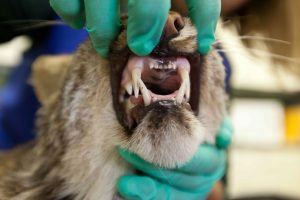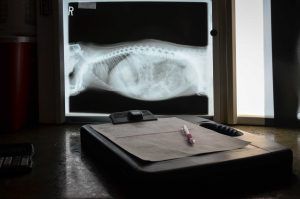When you need an annual physical, you take yourself to the doctor. If it’s time for your dog’s annual check-up, you go to the vet.
But what do you do for a lynx? A bison? A black bear?
At Northwest Trek, we want our animals to be as healthy as possible, and that means regular wellness exams, just like pets or people. But with a wild animal, a vet has to be creative – and collaborative – about checking health signs.
“We do a wellness exam for every animal,” says Dr. Allison Case, Northwest Trek veterinarian.
That means animals that come to Trek from other zoos as well as baby animals born inside the wildlife park. For incoming animals it all begins, says Dr. Case, with vet-to-vet communication.

It all starts with a conversation
“The sending vet and the receiving vet get to exchange the animal’s medical history, “she says. “There’s all this professional colleagueship behind the scenes.”
Dr. Case then talks about what tests she wants done on the animal before it arrives, in order to protect Northwest Trek animals from any incoming diseases or parasites. These tests might involve fecal analysis, blood tests, or a full dental cleaning.
Then, when a new animal arrives – such as Nuka, Northwest Trek’s newest lynx – it lives in an area behind the scenes for a while to make doubly sure it’s healthy and stable.
Finally, Dr. Case gets to do her own full exam. As with any other animal at the wildlife park, she starts with a lot of observation – watching the animal in daily behavior. Then, after giving an anesthetic, she and the keepers and veterinary technician gently bring the animal to the health care clinic tucked away behind the scenes at Northwest Trek.
Testing, Testing
In less than an hour they take samples to do fecal screens for parasites or bacteria, blood work and urine tests. They’ll often take X-rays of the animal, and measure weight and heart rate. They’ll do a complete dental clean, and give any necessary vaccinations.

“I do my own complete baseline assessment,” says Dr. Case, who keeps entire files on each animal exactly as a human doctor would.
After that, most animals at Trek have physicals every three years, with lots of careful observation in between by both keepers and veterinary staff – from as safe a distance as necessary, of course.
Has Dr. Case ever had any big surprise finds during a routine exam?
“Yes!” she laughs. “One time I examined what we were told was a male badger, only to discover it was actually a female! Everyone was very excited.”
And then there was the sheep that turned out to be a hermaphrodite – both sexes in one animal.
“It was a ewe, a female sheep, that the keepers had noted had unusually large horns,” says Dr. Case, who was working with the herd in the Free-Roaming Area. “It was super-cool.”
It’s all about caring
But then there are the more challenging issues, such as when an animal has a serious condition or is simply very old.
“Then you do everything possible to provide the animal with a very high quality of life, whether that’s through surgery, chemotherapy, natural medicine, pain management, even acupuncture,” says the vet. “What I love about working in AZA-accredited zoos is that we’re committed to providing the highest quality of life for every animal, and we prevent suffering.”
Dr. Case points to a framed certificate on her office wall.
“That’s right there in the veterinarian’s oath,” she says.
– Rosemary Ponnekanti, Northwest Trek